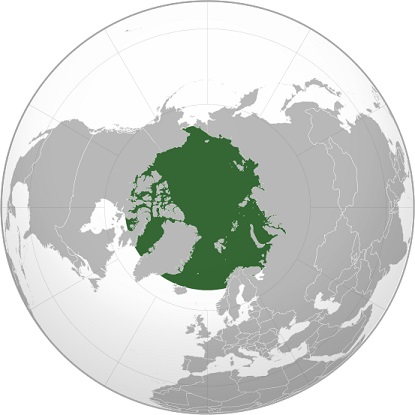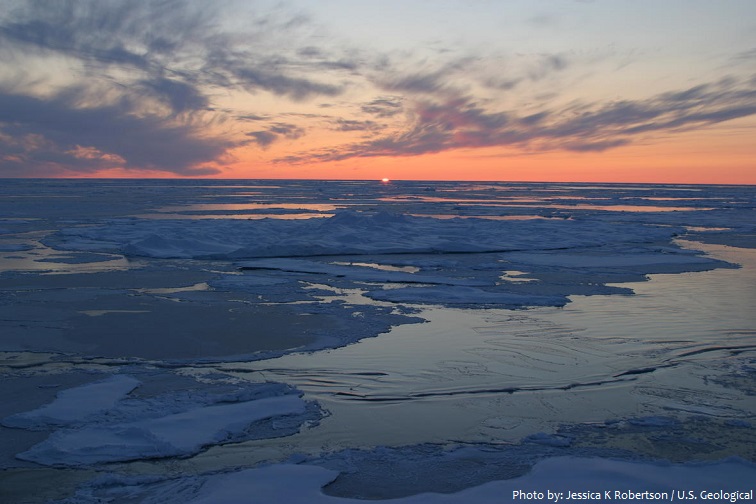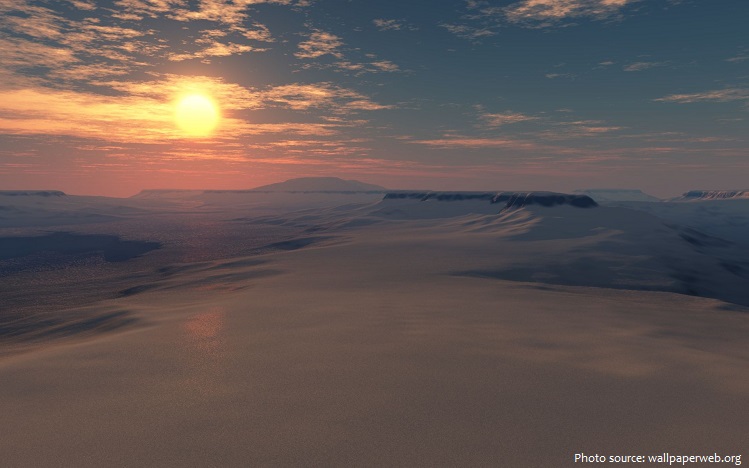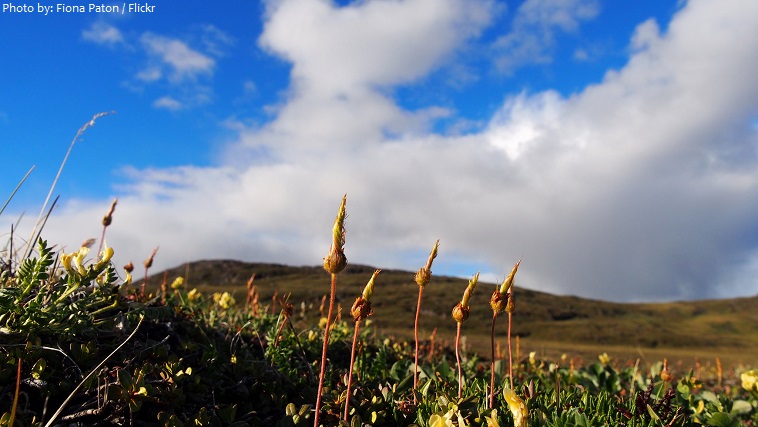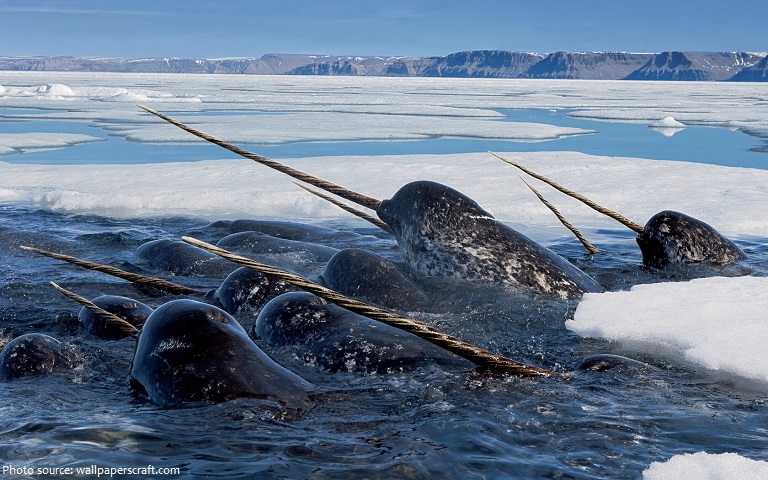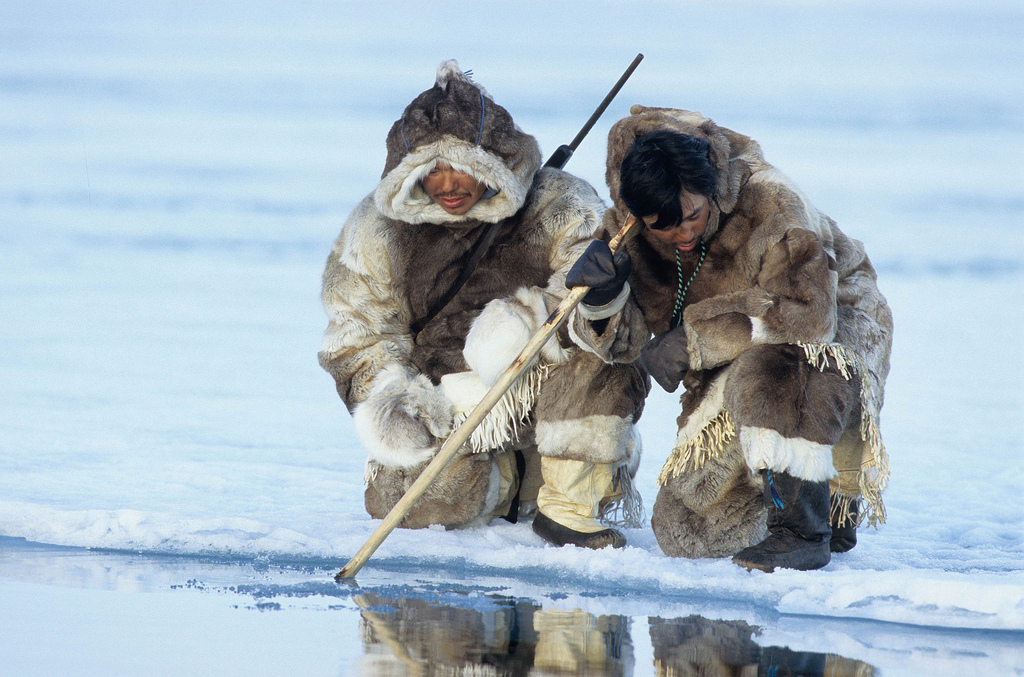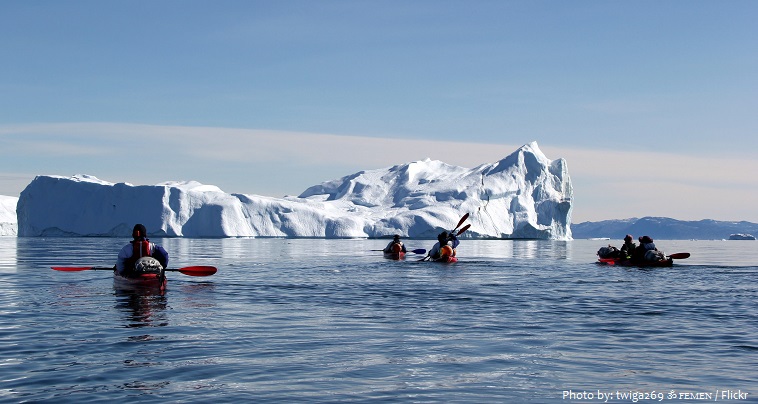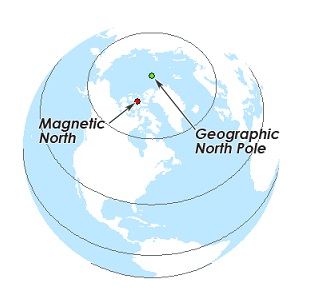The Arctic is a polar region located at the northernmost part of the Earth.
It is the most extraordinary, mysterious and enigmatic region on our planet.
The Arctic consists of the Arctic Ocean, adjacent seas, and parts of Alaska (United States), Northern Canada (Canada), Finland, Greenland (Denmark), Iceland, Norway, Russia and Sweden.
It occupies approximately one sixth of the Earth’s surface.
The Arctic is almost entirely covered by water, much of it frozen. Some frozen features, such as glaciers and icebergs, are frozen freshwater. In fact, the glaciers and icebergs in the Arctic make up about 20% of Earth’s supply of freshwater.
Most of the Arctic, however, is the liquid saltwater of the Arctic ocean basin. Some parts of the ocean’s surface remain frozen all or most of the year. This frozen seawater is called sea ice. Often, sea ice is covered with a thick blanket of snow.
Land within the Arctic is predominantly treeless permafrost (permanently frozen underground ice) – containing tundra.
The Arctic’s climate is characterized by cold winters and cool summers.
Average winter temperatures can be as low as −40 °C (−40 °F), and the coldest recorded temperature is approximately −68 °C (−90 °F).
The Arctic is affected by current global warming, leading to Arctic sea ice shrinkage, diminished ice in the Greenland ice sheet, and Arctic methane release as the permafrost thaws.
Because of the earth’s tilt, the Arctic receive 24 hours of sunlight each summer, but 24 hours of darkness each winter.
Midnight Sun is a name given to the sun when it can be seen at midnight during the Arctic or Antarctic summer.
Polar night is the opposite of midnight sun, when none of the Sun’s disc is visible above the horizon at all.
Arctic life is characterized by adaptation to short growing seasons with long periods of sunlight, and to cold, dark, snow-covered winter conditions.
Approximately 1,700 species of plants live on the Arctic tundra, including flowering plants, dwarf shrubs, herbs, grasses, mosses, and lichens.
Thousands of years of evolution have prepared Arctic animals for life on and around the sea ice.
Animals in the Arctic include the reindeer, musk ox, moose, thinhorn sheep, Arctic ground squirrel, lemming, Arctic hare, Arctic fox, ermine, snowy owl, polar bear, grizzly bear, wolf and wolverine.
Marine mammals include seals, walrus, and several species of cetacean — baleen whales and also narwhals, killer whales, and belugas.
Insects such as mosquitoes and moths are common, especially as icemelt creates ponds during spring and summer. Insects and insect larvae provide a crucial diet for birds, such as wrens and sandpipers, and freshwater fish.
Because of climate change, that ice cover has been changing rapidly, in both extent and thickness, and shrinking far too quickly for animals to adapt.
According to experts, early humans began to explore these northern lands 10,000 years ago. The hunters and anglers of the Proto-Eskimo tribe were the first native residents of the Arctic Region. The native minorities of the North still live in the traditional settlement areas of their ancestors and preserve their traditional way of life, economic practices and trades.
Residents of the Arctic include a number of indigenous groups as well as more recent arrivals from more southern latitudes. In total, only about 4 million people live in the Arctic worldwide, and in most countries indigenous people make up a minority of the Arctic population.
The extreme Arctic climate makes the region a forbidding place to travel and explore. Even so, people have found ways to explore the Arctic.
Travel in the Arctic is still dependent on icebreakers. An icebreaker is a very powerful ship capable of breaking up kilometers of sea ice, sometimes several meters thick.
In recent years various types of tourism have been intensively developed in almost all Arctic regions – expeditions, extreme tourism, ethnographic tourism, hunting, fishing and others.
Earth is home to two North Poles, both located in the Arctic region – a geographic North Pole and a magnetic North Pole. The northernmost point on the Earth’s surface is the Geographic North Pole, also known as True North. Located about 400 kilometers (250 miles) south of the Geographic North Pole lies the North Magnetic Pole. However, this location is not fixed and is moving continually, even on a daily basis. The Earth’s magnetic North Pole is the focus of the planet’s magnetic field and is the point that traditional magnetic compasses point toward.
While the South Pole lies on a continental land mass, the North Pole is located in the middle of the Arctic Ocean amid waters that are almost permanently covered with constantly shifting sea ice. This makes it impractical to construct a permanent station at the North Pole. No country owns the North Pole or the region of the Arctic Ocean surrounding it.
In 1958, a submarine called the USS Nautilus sailed beneath the frozen ice of the Arctic Ocean. This was proof that the enormous ice sheet rests on water and not land.
The word Arctic comes from the Greek word for bear, arktos. It refers to two constellations in the northern night sky: Ursa Major (Great Bear) and Ursa Minor (Little Bear), which contains Polaris also known as the North Star.
The very richest reserves of natural resources lie within the depths of these northern lands. The Arctic Zone is a colossal raw material reserve and is amongst the few regions in the world with virtually untouched reserves of hydrocarbon and mineral resources. The Arctic has the largest concentrations of mineral deposits – copper-nickel ore, platinum and rare earth metals, phosphorus, chromium, diamonds, silver, gold and many others.

